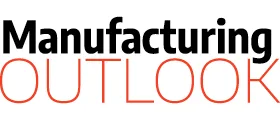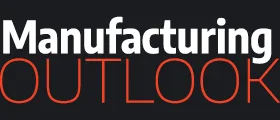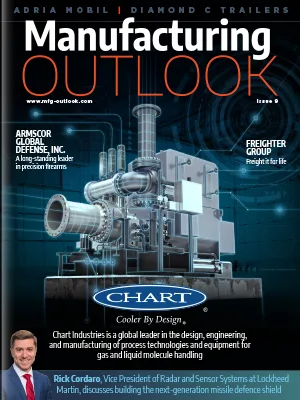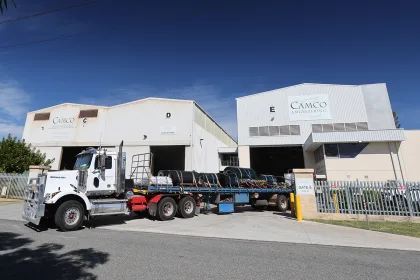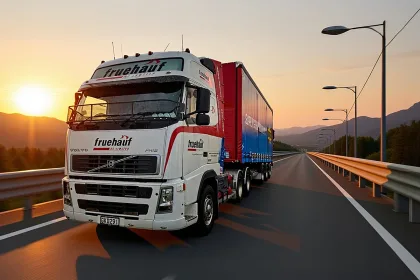Singapore has one of the world’s most innovative and advanced manufacturing industries, moving full throttle towards Industry 4.0. The Singapore Manufacturing Federation (SMF) is the largest national organisation in Singapore, representing the interests of manufacturing-related industries.
MANUFACTURING IN SINGAPORE
Singapore has one of the world’s most stable economies.
According to Bloomberg’s 2020 Innovation Index, it is the third most innovative economy in the world too, scoring high on tertiary efficiency and higher education enrolment. The country’s largest industry is manufacturing, which contributes around 20 of GDP every year. Key industries within the sector include electronics, chemicals and biomedical engineering – it is also the fourth largest exporter of high tech products in the world.
RAPID GROWTH
Singapore’s manufacturing industry is growing rapidly, and appears to be bouncing back after lockdown. In September 2020 it jumped 24.2 percent year on year, which was far above economists’ projections of a 2.5 percent rise. While precision engineering and general manufacturing subsectors shrank, there was a huge rise in biomedical manufacturing, specifically pharmaceuticals (113.6 percent). The electronics subsector also rose by 45.3 percent.
These are strong figures, which are even more remarkable bearing in mind the global pandemic. So what explains the strength of the manufacturing sector in Singapore?
One reason is the country’s commitment to innovation and technology. When Singapore became an independent republic in 1965 it had a small, low productivity manufacturing industry, and quickly began working towards industrialisation. It quickly moved towards high-skilled and technology-intensive economic activity, introducing high-paid positions and easing out labour-intensive, low-paid positions through automated production and industrial robots. By the 1980s computers and electronics soon began to constitute the largest section of the manufacturing industry.
Singapore is behind some of the world’s most compelling manufacturing advancements, including robotics, additive manufacturing, predictive analytics and artificial intelligence. Multinational manufacturing firms are attracted to the country because of this innovative culture. For example, in 2019 British manufacturer Dyson established a US$427 million research and development centre to complement its advanced digital motor manufacturing facility (also located in Singapore).
Singapore has also become a leading chemical manufacturer, despite the fact that it is not an oil-producing country. In the 1990s, the government reclaimed 12 square miles of land from the ocean off the southern coast, which they converted into a chemical manufacturing site.
More than 100 global petroleum, petrochemical and specialty chemical companies are located on the Jurong Island site, which has become a world-leading chemical manufacturing site.
Modern day Singapore has a strong, diversified manufacturing sector, which is preparing for further evolution through the adoption of Industry 4.0.
INDUSTRY 4.0 IN SINGAPORE
Industry 4.0 refers to The Fourth Industrial Revolution, and refers to the enhancement of computers and automation (the third industrial revolution) with smart autonomous systems fuelled by data and machine learning. In 2018, Singapore was ranked second worldwide in the World Economic Forum’s Readiness for the Future of Production Report. Its base of world-leading technology companies and solutions providers mean it has the capacity to transition to Industry 4.0 – the country houses Accenture’s IoT Centre of Excellence and Siemens’ first digitalisation hub.
The government has committed to investing US$2.3 billion into R&D in the manufacturing and engineering sectors, helping boost the capacity of companies embarking on Industry 4.0. It has also established the Smart Industry Readiness Index, the world’s first ever self-diagnostic tool allowing companies to assess their readiness for Industry 4.0.
Q&A: THE SINGAPORE MANUFACTURING FEDERATION
The Singapore Manufacturing Federation (SMF) is the largest national organisation in Singapore, representing the interests of manufacturing-related industries.
It was first established in 1932, just after the first Singapore Manufacturers Exhibition was held. It was the work of the Governor and Commander-in-Chief of the Straits Settlements, Sir Cecil Clementi, who vigorously championed the development of industries in Singapore (apart from rubber and tin), and strongly advocated the setting up of a representative body to advance the interests of small local manufacturers. After the exhibition, the exhibitors continued to meet with the intention of setting up an association to nurture local manufacturers.
On September 20, 1932, the association was formally incorporated as a Company Limited by Guarantee with 17 member-companies. The SMF’s initial vision and purpose was to diversify the island’s economic base, nurture its fledgling industries, and champion the collective needs of its manufacturing enterprises.
APAC Outlook spoke to Douglas Foo, current president of SMF, about the organisation’s current goals and visions, as well as gaining a deeper insight into Singapore’s manufacturing sector.
Since inception, how has the Singapore Manufacturing Foundation developed and progressed in terms of its key objectives and the messages it tries to get across?
Douglas Foo (DF): Over the years, the SMF has championed the interests of the local manufacturers and worked with them to continually grow the manufacturing community in Singapore. This role has remained unchanged through the years.
Over time, the SMF built its credibility as a steadfast partner to manufacturers and to nation building. With collaboration as a fundamental tenet of the SMF’s ethos, it progressively garnered a higher public profile as it actively submitted proposals to the government and engaged the media.
In its role as a partner to nation building, when the late Mr Lee Kuan Yew became the first Prime Minister of Singapore in 1959, SMF leaders helped to garner support for the new government’s economic proposals. In 1965, the SMF hired its first Secretariat to manage the Federation and liaise with the government. In the same year, the SMF signed a historic charter for industrial progress with the National Trades Union Congress and the Singapore Employers’ Federation. It was believed to be the first joint-agreement of its kind in Southeast Asia.
Today, the SMF is proud to represent the interests of close to 4,000 members comprising SMEs, MNCs and affiliate members.
What do you find most exciting about the manufacturing industry in Singapore?
DF: The manufacturing sector in Singapore has a high commitment to innovation, which differentiates us from the rest of the world.
Today, Singapore is the world’s fifth largest refinery export hub and is also amongst the top 10 of global chemical hubs. Also, the manufacturing sector in Singapore is constantly evolving. With Singapore not having the land resource that other countries have, the focus is on cultivating a culture of continuous upskilling of the workforce, and increasing the efficiency and productivity of the manufacturing sector through the use of technology. It is in this regard that the SMF has set up a professional training Centre for Corporate Learning (CCL) to better provide training in the relevant corporate fields.
As manufacturing continues to evolve globally, we can take reference from our history to get a sense of how this sector can change beyond our current imagination. For example, in the past video games came in the form of game cartridges – manufacturers had to produce different parts including the gaming console box, the cartridge that contains the game software, a controller, as well as a monitor screen to view the game. Now, digital games are downloaded onto phones with just a tap on the screen. Therefore there is now almost no need to have factories to produce these digital games. The manufacture of a non-physical product that is consumed in a digital space would not have been imagined when the traditional games console was conceptualised.
On the flip side, what are its biggest challenges?
DF: The perennial challenges of manufacturing in Singapore stem from us being land and natural resource scarce. Operational costs must be carefully managed and our businesses must constantly innovate to bring our products out of Singapore, as the local consumer market is small relative to countries such as China and the US.
In addition, Singapore as a trading hub is susceptible to the global economic climate; our manufacturers have to work hard at working smart in planning inventories for production and stock.
How has COVID-19 affected the manufacturing industry?
DF: Much has been said, and in certain circumstances felt, about the negative effects that COVID-19 has brought. However, here at the SMF we believe that there is always opportunity in crisis. It is important to take an optimistic approach because there is no good in lamenting things that we cannot change. What we should do is make the best of every situation and be prepared to be in the best position possible to seize opportunities when the effects of the pandemic recede, and ride the upswing of the economic cycle.
In this regard, it is heartening to see that many companies are using this opportunity to send their staff for training, re-examining their business models, adopting more digital solutions and making their workforce more mobile by implementing remote working arrangements. Lessons have been learnt about the necessity to inculcate agility, resilience and flexibility in the way we do business and interact with one another.
It is also a relief to see that there are still many bright spots in the manufacturing sector such as the medical technology industry, life sciences industry and smart automation industry. With these industries doing relatively well, there is perhaps some cushioning effect for services and products up and down the supply chain to these industries. What is heartening to see in such economic uncertainty is how the government, employers and employees band together in solidarity as part of a tripartite alliance to work through this difficult time.
What trends are currently transforming the manufacturing industry in Singapore? How are you responding to them?
DF: Perhaps the biggest trend transforming the manufacturing industry is the COVID-19 pandemic. Previously, there was little or no impetus to change the way business is done traditionally.
Given the differing preventive measures taken from country to country and city to city, our manufacturers now have to do with uncertainty both from the supply and demand side. Manufacturers must be able to adapt quickly. Perhaps an area which has seen the biggest change for our manufacturers would be that of making their products known to the world. Pre-pandemic, trade associations like the SMF would lead our members on business missions, set up exhibition pavilions to exhibit their products and offerings and attend physical networking sessions.
In line with safe distancing measures and travel restrictions, we have quickly adapted to allow for our businesses to exhibit their products through virtual exhibitions and online business missions. The SMF has also conducted virtual business matching sessions for our members with overseas counterparts. The pandemic has also shown companies the importance of banding together to work as a pack, thereby increasing the chances of success.
Digitalisation is another major trend happening in the manufacturing sector in Singapore. Under the fourth industrial revolution, the manufacturing sector is being encouraged to embrace and implement digitalisation into their operational processes to efficiency. Technologies like Artificial Intelligence (AI), Internet of Things (IoT), autonomous vehicles and additive manufacturing (3D printing) are some of the more common technologies that manufacturers are experimenting with for integration into the production process.
Have you got any projects in the pipeline you wish to highlight?
DF: Some of the projects that the SMF are working on include: identification of new areas of business model innovation and conducting courses and seminars on the same to businesses; promoting digitalisation and innovative advanced manufacturing techniques such as 3D printing; “Manufacturing as a Service” through AI business ad usage matching; and, working with our manufacturing counterparts overseas to prepare for a technical “GiG” Economy.
The SMF will continue to curate programmes and services which will serve our members’ interest. The key areas that the SMF focuses on are skills upgrading and conversion in the manufacturing sector, digitalisation, internationalisation and data analytics. We welcome anyone willing to collaborate to get in contact with us.
How do you see the manufacturing industry developing over the next five years?
DF: Given the pace of evolution of the manufacturing industry, it would difficult to predict and of little value to speculate what the industry would be like over the next five years.
However, if we see what some of the more advanced factories of automobiles such as Mercedes and McClaren are doing, it would quickly become apparent that manufacturing will evolve from being one that is thought to be labour intensive in production lines to one where human involvement is in supervision and perhaps quality control. The use of data, collected from more technologically convenient sources, to understand the wants and needs of consumers, will help reduce wastage and focus production. Production for consumption in the digital realm should also take on greater importance and scale.
The future of manufacturing is exciting – there is no telling if the next five years will be realised in the next two years or sooner. No matter, we will advance if we adopt a positive “can-do” attitude and stride into each new frontier with confidence and optimism.
FOCUS ON OIL AND GAS
Singapore is a leading oil and gas manufacturer – in fact, it is one of the world’s top five oil trading and refining hubs, housing over 3,000 established marine and offshore engineering firms. It is also a world leader in the construction of jack up rigs, semi-submersibles and exploration platforms. The oil industry contributes around five percent of Singapore’s annual GDP, and employs some 10,000 workers.
The country’s key strengths in engineering, manufacturing and innovation have attracted some of the largest multinational O&G firms, such as Baker Hughes, Halliburton and TechnipFMC. These companies have entrusted their Singaporean divisions with the manufacturing of important product lines, such as completion tools and artificial lift. Many of these companies are headquartered on the Jurong Island petrochemical complex, which has a refining capacity of 1.3 million barrels per day, makes up a third of Singapore’s manufacturing output and has attracted over $35 billion in investment.
The O&G sector in Singapore is heavily investing in research and development. The Technology Centre for Offshore and Marine Singapore (TCOMS) is the country’s first national R&D centre for the sector. It was launched in 2016 to facilitate public-private partnerships and develop innovative industry solutions. The centre boasts nearly $107 million of top infrastructure, including a deep water ocean basin.
International O&G companies are drawn to Singapore not only by the country’s innovation, but because of a skilled workforce.
“Talent is a key enabler for this complex and dynamic industry. As it constantly upgrades capabilities to operate state-of-the-art technologies, companies can tap a highly skilled workforce capable of managing high-end complex manufacturing and research projects,” explains Lim Kok Kiang, Assistant Managing Director of Economic Development Board.
The government is constantly putting new initiatives in place to ensure talent is developed and maintained. For example, the National University of Singapore recently established both a maritime technology and subsea engineering professorship programme.
Despite the shocks of COVID-19 and a slow global movement towards carbon neutral economies, the outlook for Singapore’s O&G industry remains positive. This is thanks to recovering prices, strong demand from the transport industry and sustained growth in consumption of natural gas, petroleum and petrochemical products. Government support in the industry and R&D investments by major players continue to boost and fuel this manufacturing sub-sector.
